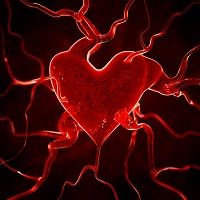Article
Patients with Atrial Fibrillation on Continuous Oral Anticoagulant Therapy Require Transesophageal Echocardiography Prior to Catheter Ablation
Author(s):
A retrospective analysis of transesophageal echocardiography from 388 patients undergoing catheter ablation for atrial fibrillation has found no significant evidence that novel oral anticoagulants reduce the incidence of left atrial thrombus or eliminate the need for transesophageal echocardiography before ablation.

A retrospective analysis of transesophageal echocardiography from 388 patients undergoing catheter ablation for atrial fibrillation (AFib) has found no significant evidence that novel oral anticoagulants reduce the incidence of left atrial thrombus or eliminate the need for transesophageal echocardiography before ablation.
Hospitals sometimes perform transesophageal echocardiography before ablation on warfarin-using AFib patients in order to check whether therapeutic doses of warfarin have failed to work or non-therapeutic doses of warfarin have permitted the formation of left atrial thrombus and/or dense spontaneous echocardiographic contrast.
Such tests are also performed on AFib patients who use novel oral anticoagulants (NOACs), but investigators hypothesized that the such checks might be unnecessary because the newer medications come in fixed doses designed to provide therapeutic benefits to all patients.
The study team compared transesophageal echocardiography from 183 AFib patients who had been using NOACs for at least 4 weeks before scheduled ablation and 205 AFib patients who had been using warfarin for at least 4 weeks before scheduled ablation.
Transesophageal echocardiography detected left atrial thrombus on 4.4% of the NOAC patients and dense spontaneous echocardiographic contrast on another 1.6% of the NOAC patients. The results for warfarin patients were statistically similar.
The investigators also looked at outcomes for individual NOACs and found that left atrial thrombus was detected in 5.4% of dabigatran users, 4.8% of rivaroxaban users and 0% of apixaban users. The differences, however, were not significant (p = 0.46).
Further analysis found only 2 significant predictors of left atrial thrombus: congestive heart failure (odds ratio [OR]: 5.38; 95% confidence interval [CI]: 1.79 to 16.2; p = 0.003); and persistent AF (OR: 3.27; 95% CI: 1.06 to 10.2; p = 0.040).
“Despite ≥4 weeks of anticoagulation, the rate of left atrial thrombus in patients on NOACs before catheter ablation of AFib or atrial flutter was 4.4%,” the study authors wrote in JACC Clinical Electrophysiology. “This suggests that continuous NOAC therapy does not eliminate the need for transesophageal echocardiography before catheter ablation of AFib.”
The investigators called for further studies to see whether a larger study group would have found significant differences in left atrial thrombus rates among patients who used different NOACs and, if so, even more research to explore what mechanisms gave the medications differing antithrombotic properties.
The study team’s finding that 4.4% of NOAC users still had left atrial thrombus after 4 weeks of anticoagulation conflicts somewhat with findings from other research.
The latest consensus ablation recommendations from the Heart Rhythm Society, the European Heart Rhythm Association and the European Cardiac Arrhythmia Society state that findings of thrombus among patients who had been therapeutically anti-coagulated fell, with remarkable consistency, between 1.6% and 2.1%.
Still, the recommendations note, there is no consensus yet on when to use transesophageal echocardiography (TEE).
“There is wide variation among the task force members concerning the use of TEE prior to AFib ablation. Approximately 50% of task force members perform a TEE in all patients undergoing AFib ablation regardless of presenting rhythm and CHADS2 or CHA2DS2VASc score. Another 20% of the writing group only performs a TEE if a patient presents in AFib of unknown duration or more than 48 hours duration and has not been systemically anticoagulated for at least 4 weeks. The remaining one third of task force members employs clinical judgment and decides on a case-by-case basis whether to perform a TEE.”





